SYMMETRIES
These devices allow us to play with the rotation groups of various objects: sports balls, polyhedrons, etc.
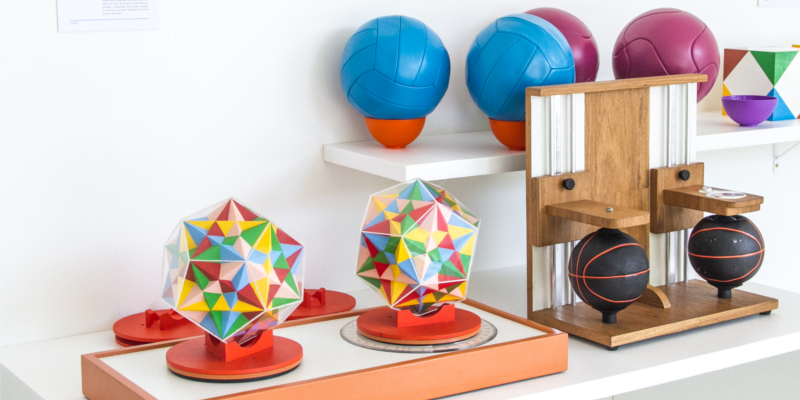
The order of the symmetry axis is the number n times the object returns to the same configuration until it completes one revolution. At each 360/n turn, the part returns to the same configuration.
Note that sports balls have different symmetry axis configurations. On the other hand, some balls with different designs have exactly the same axes configuration. In fact, their rotation symmetry groups are identical, although their drawings are not.
In addition to sports balls, another object where we can easily see symmetries is the cube! Well... it looks pretty symmetrical, doesn't it? Can we measure the amount of symmetry somehow?
In how many different ways can a cube be moved so that it always occupies the same place in space? Using the cubes with the diagonals marked, it is possible to verify that each movement of this type corresponds to a change in the position of the diagonals. This is the first step towards realizing that each symmetry of the cube corresponds to a distinct permutation between the 4 diagonals and vice versa. That is, in the group of symmetries of the cube we have 24 (or 4!) elements.
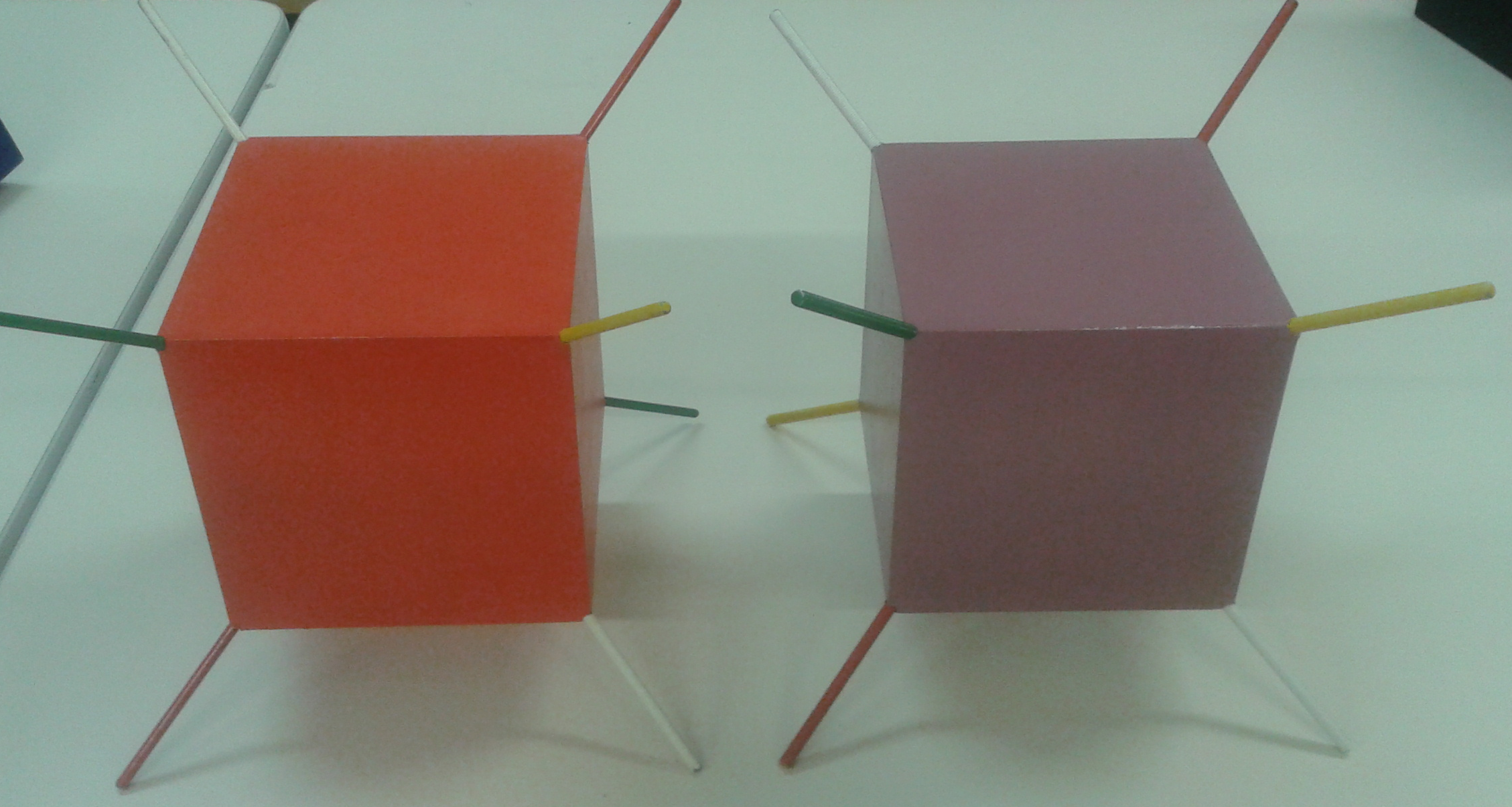
By the way, it is possible to improvise this spiky cube with the following model, based on the following instructions. If you prefer, you can download it from this link.
1: Print on heavyweight paper (eg 180g/m2) or cardstock, or print on plain paper and glue onto cardstock.
2: Place a cardboard underneath and poke holes in the marked points. With a barbecue skewer, widen the holes so that the skewer passes through just and smoothly. Cut out the figure.
3: With the help of a ruler, bend the edges and the flaps. Assemble the polyhedron with the printed part facing out, placing the tabs (the tabs are inside the polyhedron; do not bend them too much to allow a little pressure when gluing). Wait for it to dry well.
4: With the barbecue stick, reinforce the holes, crossing the polyhedron on the symmetry axes. Do not enlarge the holes too much, to facilitate the turning of the polyhedron just by manipulating the toothpick.
OBS: Colors can be referenced by their letters (P = purple, O = orange, B = blue, G = green) or by the corresponding symbols.
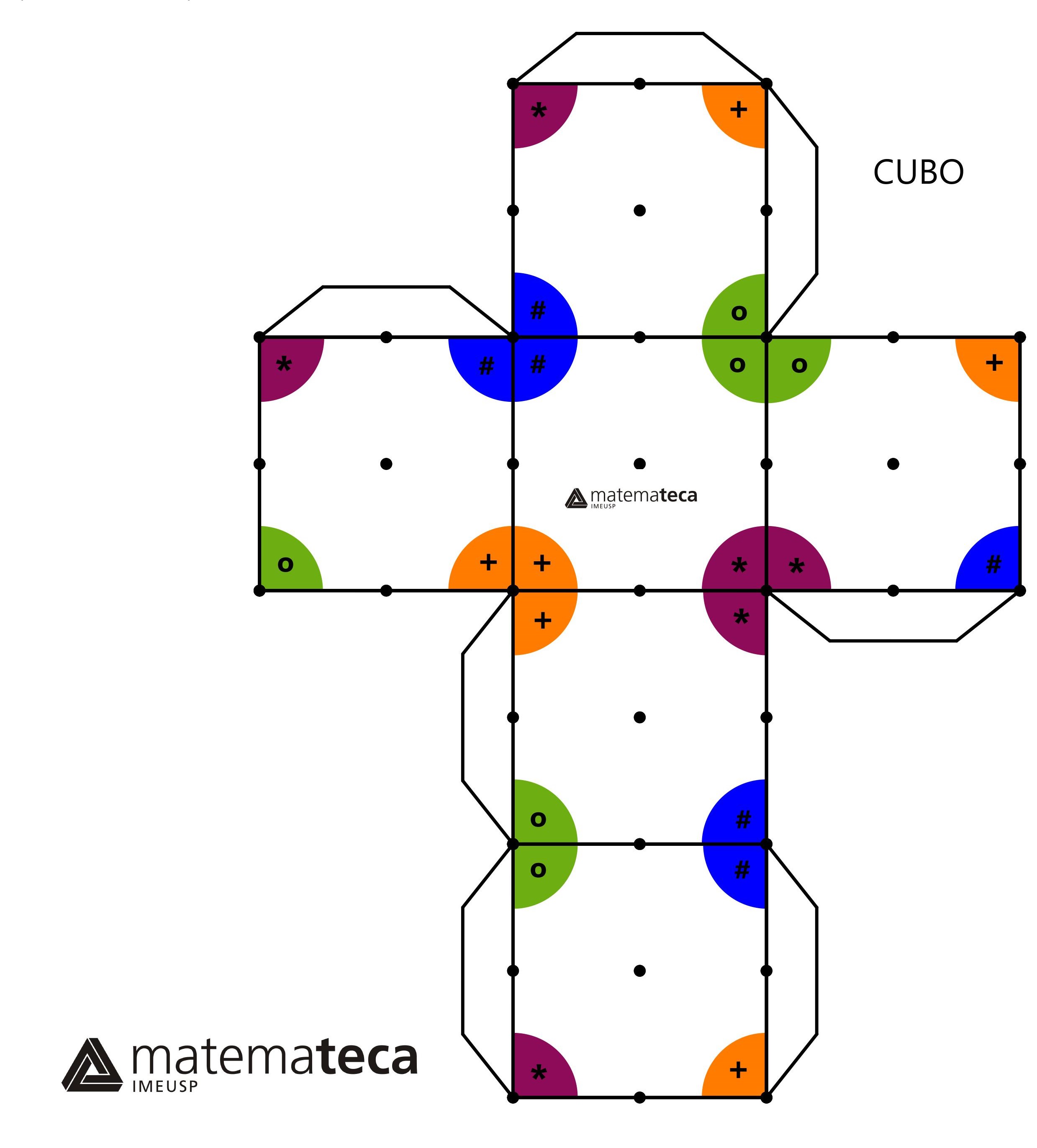
And what about the symmetries of other Platonic solids? Below, we have images of some examples: dodecahedron symmetries, triangular's and tetrahedron prism's, which can also be accessed as a PDF by clicking on the links above.
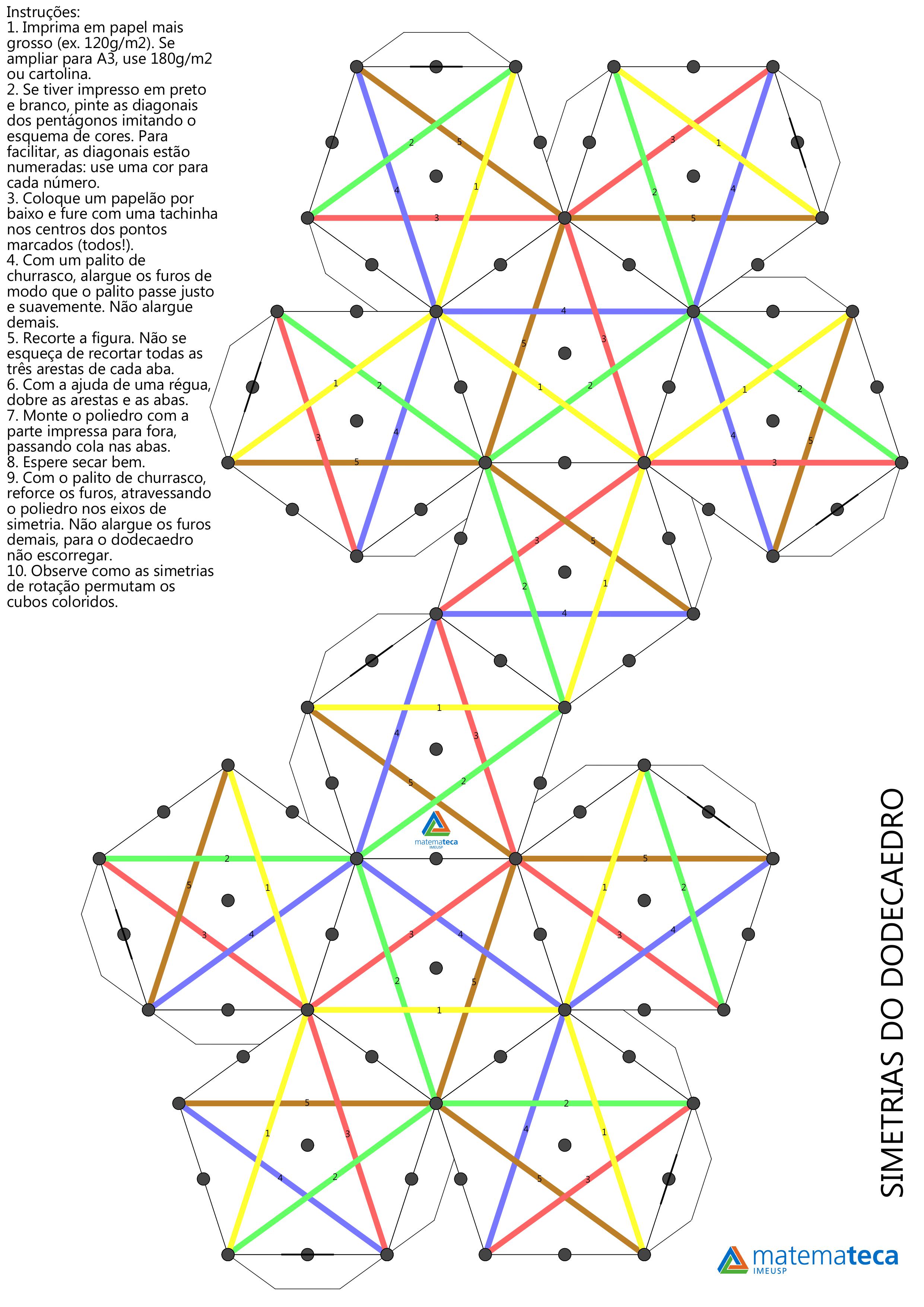
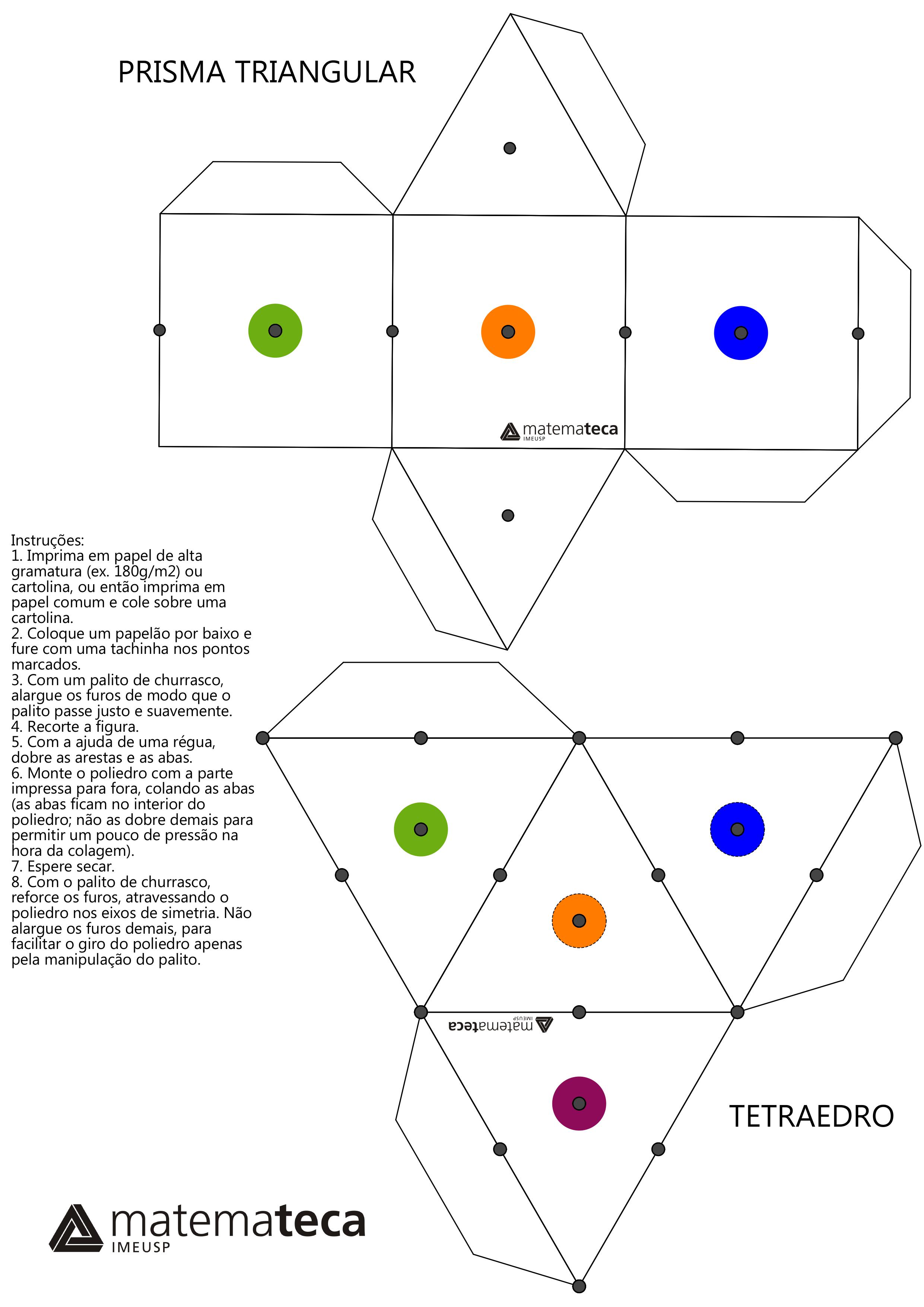
If you suspect the object has an axis of rotational symmetry, place it on one of the platforms with that axis vertical and place a copy of the object on the next platform in the same position for comparison. If it is possible to rotate the object by less than 360 degrees in such a way that it returns to its initial configuration, then the suspicion is confirmed: this axis is really an axis of rotational symmetry.
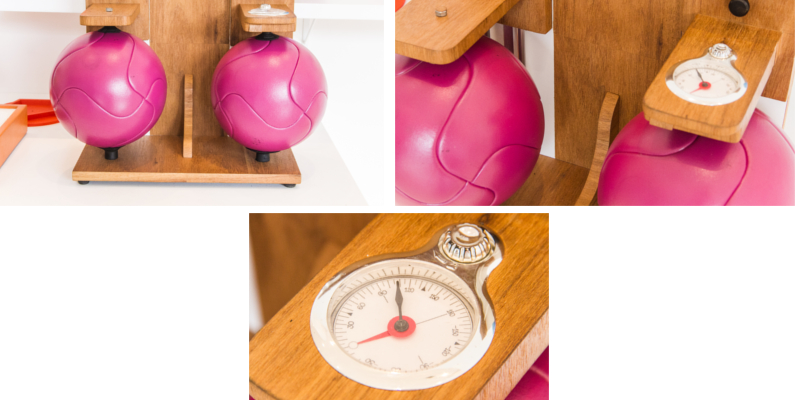
To find out even more about this topic, just take a look at the videos below! Enjoy and check out the other cool videos on Matemateca's channel on YouTube!
